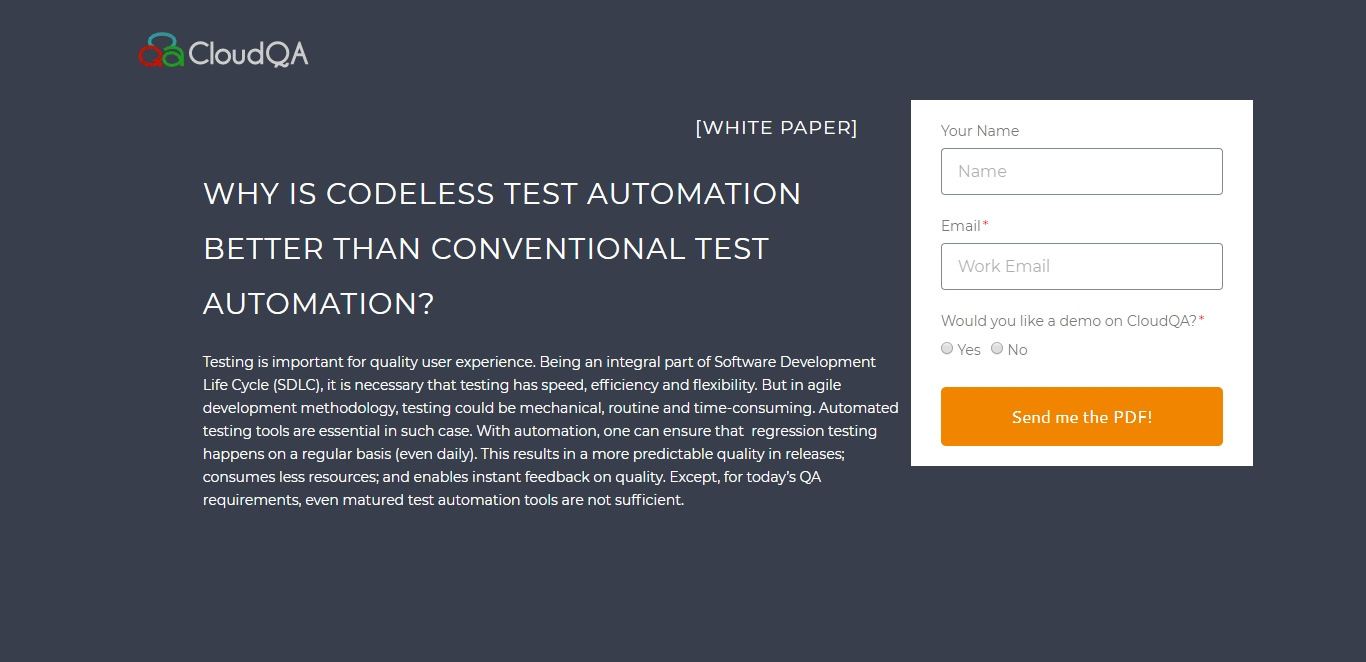Selenium 3 - A Step closer to Codeless testing!

Selenium 3 – A Step closer to Codeless testing!
July 29, 2016, was a big day for testing professionals with the release of beta version of Selenium 3.0. The online community of testing and QA professionals are flooded with “what, when, how questions on Selenium 3” and individuals are exploring every bit of it. But for a firm like CloudQA who offer “Testing as a Service [TAAS]” what probably could have changed with the release of a newer version? We thought, brainstormed and tested to conclude – we are a step closer to Codeless Testing!
Scratching your head? Read on to know How?
How Selenium 3 is Helping to Go Codeless?
Selenium 3 with its new features could help you achieve codeless testing with its new features –
- Selenium 3 supports Java 8, and Java 8 is about concise coding and readability.
- Firefox with its driver Mozilla’s Gecko driver [ new feature of Selenium 3] could facilitate codeless testing when combined with Firefox plugin Selenium IDE. The plugin has record and play feature that is quite like QTP record function and helps you create test quickly with the aid of action buttons. However, the plugin cannot be used for complex test suites and comes with a limitation of test automation with simple test cases only.
- If you have been using WebDriver API, just a simple import of new Selenium 3 will upgrade your software. And if you combine this with Gauge Framework that supports multiple languages and cross browser testing you could build a business layer [ English-like syntax] on top of your scripts making it easy for the test automation. You may also combine Selenium tool with Robot Framework, Behaviour Driven Development[with Gherkin] or Keyword Driven Framework, then the coding requirement is minimal, and you could get results in favor to codeless testing
- Selenium RC is dead, and if you have been using it, it’s time to move on and get an upgrade or else leave codeless testing, you may not be able to run any automation.
Benefits of Codeless Testing
- Scripting may need more effort and time, with codeless testing individuals could automate test cases quickly.
- No dependency on learning specific language, as users with right framework or plugins would either need to interact with the GUI or use plain English
- Domain experts could review the scripts and provide their feedback.
- Quick testing means time to market gets reduced and hence an increase in productivity with no compromise in quality
- Automate the most complex test cases with ease.
The world needs tools and application that could help them do multitasking! Would you like to be glued to your computer screen debugging a script for #AutomationTesting or would love to click on user interface or type in simple commands in plain English, while you watch your cricket match? The choice is yours!
LIKE THIS POST SHARE IT WITH YOUR FRIENDS
RECENT POSTS
Guides

How To Select a Regression Testing Automation Tool For Web Applications
Regression testing is an essential component in a web application development cycle. However, it’s often a time-consuming and tedious task in the QA process.

Switching from Manual to Automated QA Testing
Do you or your team currently test manually and trying to break into test automation? In this article, we outline how can small QA teams make transition from manual to codeless testing to full fledged automated testing.

Why you can’t ignore test planning in agile?
An agile development process seems too dynamic to have a test plan. Most organisations with agile, specially startups, don’t take the documented approach for testing. So, are they losing on something?

Challenges of testing Single Page Applications with Selenium
Single-page web applications are popular for their ability to improve the user experience. Except, test automation for Single-page apps can be difficult and time-consuming. We’ll discuss how you can have a steady quality control without burning time and effort.

Why is Codeless Test Automation better than Conventional Test Automation?
Testing is important for quality user experience. Being an integral part of Software Development Life Cycle (SDLC), it is necessary that testing has speed, efficiency and flexibility. But in agile development methodology, testing could be mechanical, routine and time-consuming.






